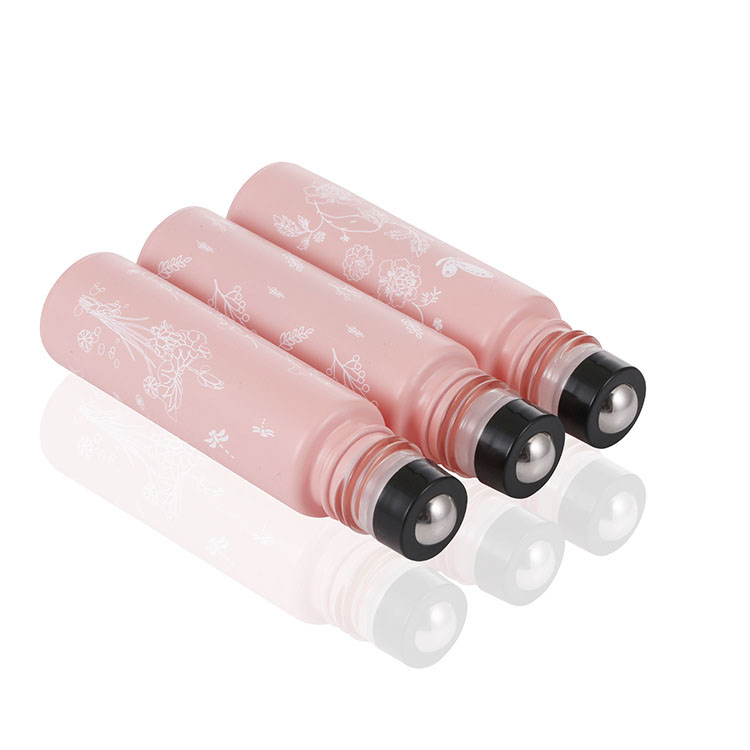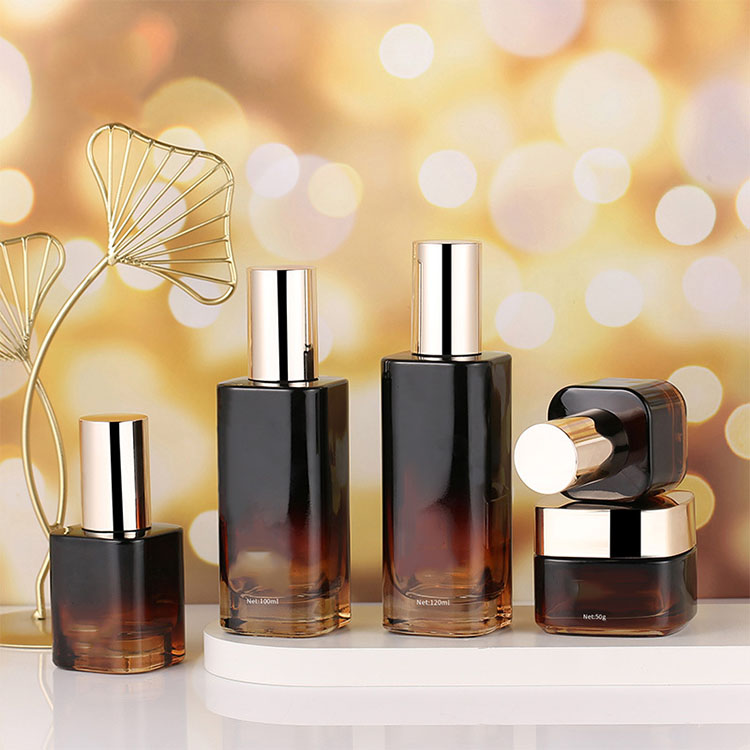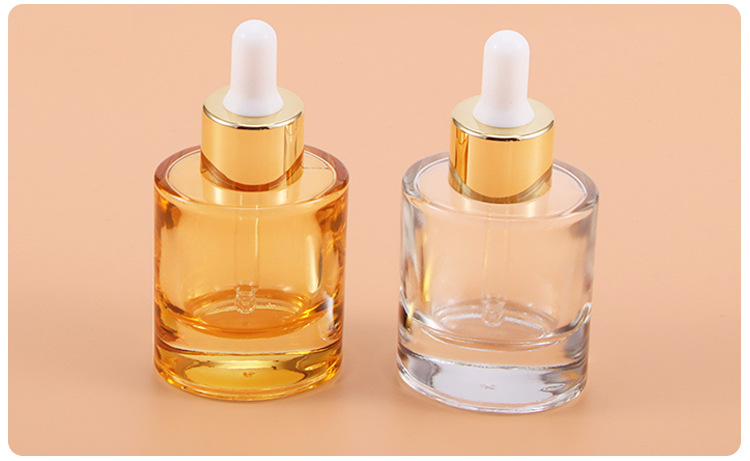
 Haojing
Haojing  2025-11-12
2025-11-12
cosmetic glass bottles Screen printing is short for "screen printing". Screen printing is the silk fabric, synthetic fiber fabric or wire mesh stretched on the mesh frame, using the method of hand-carved paint film or photochemical plate production screen printing plate. Modern screen printing technology, is the use of photographic materials through the method of making screen printing plate.(Click to learn more)

Glass screen printing is the use of screen printing plate, the use of glass glaze, decorative printing on glass products. Glass glaze is also known as glass ink, glass printing material, it is a paste printing material mixed by coloring material, binder.Because of the ink, the effect of printing on the obvious concave and convex. Screen printing rules of the bottle (cylindrical) can be printed at a time, other irregular piece of a cost, color is also a cost, and divided into two kinds of self-drying ink and UV ink, self-drying ink is easy to drop for a long time, can be wiped off with alcohol, UV ink feels obvious concave and convex is difficult to erase.Due to the different printing materials and printing process, screen glass printing on the use of ink requirements are not the same.First of all, the most important thing in glass printing is to strengthen the binding force of ink and glass surface, so that cosmetic glass bottles in the use of ink does not appear to fall off or dissolving phenomenon.Secondly, screen glass printing is dry at high temperature, so the ink used is high temperature resistant ink. The main types of inks used for glass screen printing are as follows:

1, glass glaze
According to the firing temperature can be divided into three kinds of high temperature glaze, medium temperature low temperature, low temperature (550℃) glaze is mainly used for the decoration of thinner glass bottles; Medium temperature (580℃) color glaze is widely used in the printing of cosmetic bottles, glasses and other glass products; High temperature (600℃) color glaze is mainly used for the printing of beverage bottles. Because the glaze contains heavy metal lead, so we must pay attention to the selection of good quality glaze, especially food packaging should pay attention to.
2, UV glass ink
The appearance of UV glass ink largely solves the drying problem of glass screen printing, but it should be noted that excessive curing will cause the embrittlement of the ink film, so that the adhesion of the ink layer is reduced.
3, two liquid reaction glass ink
This kind of ink is mainly used for some small glass containers such as cosmetic bottles printing, use on-site preparation, placement time can not be too long, so as to avoid ink hardening conjunctival waste.
4, thermosetting special glass ink
The ink belongs to the volatile drying ink, after printing at room temperature for 10 to 15 minutes to dry. In addition, in order to improve the strength and adhesion of the ink film, it is necessary to bake at 180℃ for 10 minutes.
5, glass pigment ink
Glass pigments contain a glass powder with a low melting point. Linkers (synthetic resins and organic solvents) are used to adjust the printability of the ink, but the ink has no intermediate color. After printing, the ink should be processed by heating furnace sintering, so that the ink in the connecting material evaporation, burning after the glass powder softening fixed on the glass surface.The connecting material of ink is mainly synthetic resin and organic solvent, the basic requirement of the connecting material is that it can complete the evaporation, sublimation and combustion process at low temperature, to avoid the residue of the connecting material when the glass powder is melted, otherwise, the printing surface will be foaming and lose smoothness.
6. Gold liquid, silver liquid and gold paste
To add various kinds of metal organic compounds as the main component of ink in the connection of material of glass printing ink. The main organometallic compounds used are metal-sulfurized turpentine, metal-thiols, etc. The same organic compounds are found in liquid silver. In gold paste, because the content of gold and silver is very small, it is feasible to use as printing ink.

Common problems and solutions in the process of screen printing
In daily processing, the following problems may occur, recommend some corresponding solutions, I hope to help you.
1, glass bottle printing after the printing of bubbles - UV ink can not be randomly added additives and mismatched diluents, if this phenomenon occurs in normal use, please contact the manufacturer to help solve.
2. When the glass bottle is printed, the screen plate sticks to the substrate -- the viscosity is too large. Please add the appropriate diluent to increase the distance between the printed matter and the screen plate.
3. The printed matter is sticky or not solidified after glass bottle curing -- check the circuit, extend the curing time and increase the power of the lamp.
4, glass bottle curing ink film adhesion is insufficient - choose the right ink.
5, glass bottle curing ink film brittle - ink film is too thick, choose the right ink.
6, glass bottle printing pattern defects - glass bottle screen cleaning to be thorough, in case of downtime is too long and light curing; Check whether there are defects in the production of the screen.
7, the ink film covering power is insufficient or too much - adjust the Angle of the scraper and the pressure on the screen, replace the appropriate hardness of the scraper.
8, glass bottle printing small text or fine pattern lines blurred - replace the appropriate hardness of the scraper.
9, the appearance of glass mesh - appropriate addition of matching thinner to reduce viscosity.
Copyright © 2020 Guangzhou Haojing Glassware CO.,LTD. All Rights Reserved.



